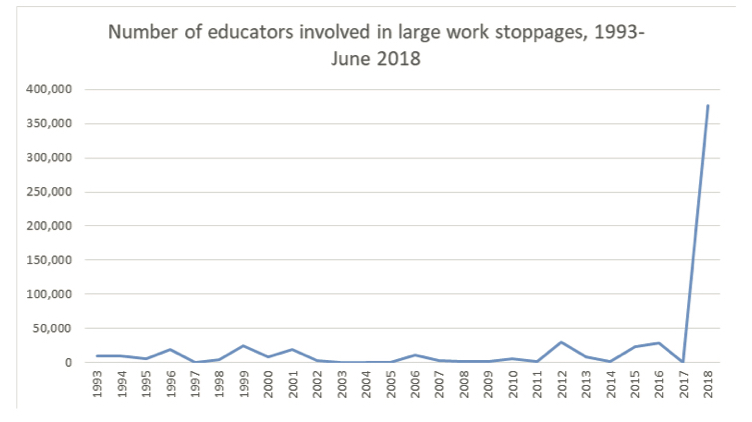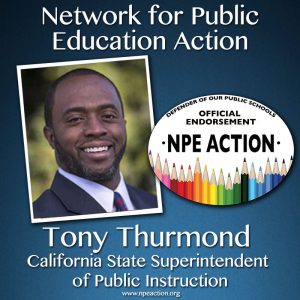Opinion: The truth about money in public education politics
The truth about money in public education politics
Thurmond will fight back against the billionaires and their pro-charter school industry agenda
There is a little watched election that is projected to be the most expensive race in California this fall. More money will be spent on the race for California State Superintendent of Public Instruction – the person who oversees over 10,000 public and charter schools – than in any congressional race, and perhaps even the race for governor.
Why will so much money be spent on this race? The reason lies with a small group of billionaires who have no education experience but because of their outsized pocketbooks wield huge influence in education politics across the nation. Billionaires like the Waltons (of Walmart fortune), Eli Broad, and President Trump’s Education Secretary Betsy DeVos have made it their priority to fight for the charter school industry, school vouchers, and high-stakes testing.
The billionaires are supporting candidate Marshall Tuck, a former charter schools executive with a mixed record of success and reputation for fighting not fixing – because they know they can count on him to support the charter school industry.
His opponent is Democratic state legislator and public school parent Tony Thurmond. Tony is a social worker by training who has spent 20 years working inside and outside of schools with some of the most high-need children in California.
Tony’s passion for education stems from his own life experience.
Like many California students, Tony Thurmond comes from humble beginnings. Tony’s mother emigrated from Panama to San Jose to become a teacher. His father was a Vietnam veteran who, suffering from PTSD, did not return to the family. When Tony was 6, his mother lost her battle to cancer. He and his brother were sent to live with a distant cousin.
Tony grew up on public assistance and college was never a sure thing – but he succeeded because he was able to attend a great public school where his teachers encouraged him to apply. At Temple University in Philadelphia, Tony became student body president.
After graduation, Tony became a social worker to give back, serving foster youth, children with incarcerated parents, folks with disabilities, immigrants, first-generation college students, and families living in deep poverty. He went on to lead nonprofits and run school-based mental health programs. Tony has taught civics, life skills, and career training courses.
A Plan to Improve California's Public Schools



























